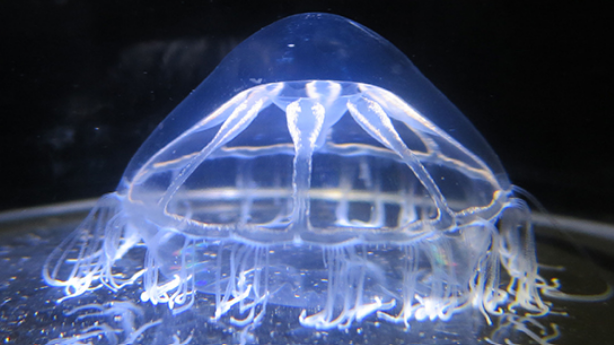A fascinating new study has uncovered clues about an unknown bio-geographic barrier deep within the North Atlantic Ocean — all thanks to an unusual deep-sea jellyfish with two distinct physical traits.
Researchers from The University of Western Australia have been studying the trachymedusan subspecies Botrynema brucei ellinorae, a marine jellyfish that exists in both the Arctic and sub-Arctic regions. What makes this jellyfish remarkable is its two unique shapes — some individuals feature a distinctive knob at the top, while others do not.
Lead researcher Dr Javier Montenegro, from UWA’s School of Biological Sciences and the Minderoo-UWA Deep-Sea Research Centre, explained, “Both types of this deep-sea jellyfish are found in the Arctic and sub-Arctic regions. However, those without a knob have never been observed south of the North Atlantic Drift region, which stretches from the Grand Banks off Newfoundland to northwestern Europe.”
A Barrier Beneath the Waves
The researchers analyzed old records, photos, and even DNA samples of these jellyfish. Surprisingly, they found that while the two shapes are genetically very similar, their distribution changes sharply above and below 47 degrees north.
Their conclusion? There may be a semi-permeable barrier in the deep Atlantic Ocean — one that allows the knobbed jellyfish to travel farther south while keeping the knobless ones up north. Dr. Montenegro suggested that the knob might even give these jellyfish a survival advantage, especially in waters where predators are more common.
Why It Matters
This isn’t just about one jellyfish. The study opens up bigger questions about how marine biodiversity works — how animals evolve, adapt, and travel across vast ocean regions.
“The fact that two shapes exist within one genetic lineage shows how much more we need to learn about the deep sea,” Dr. Montenegro said.












More Stories
iQOO 15 Launching November 26: Snapdragon 8 Elite Gen 5, 7-Year Update Promise & Everything You Need to Know
Why Cloud Seeding Failed to Bring Rain in Delhi: IIT Kanpur Director Explains
iPhone 17 vs iPhone 17 Pro vs iPhone Air: Price Comparison Across Key Markets